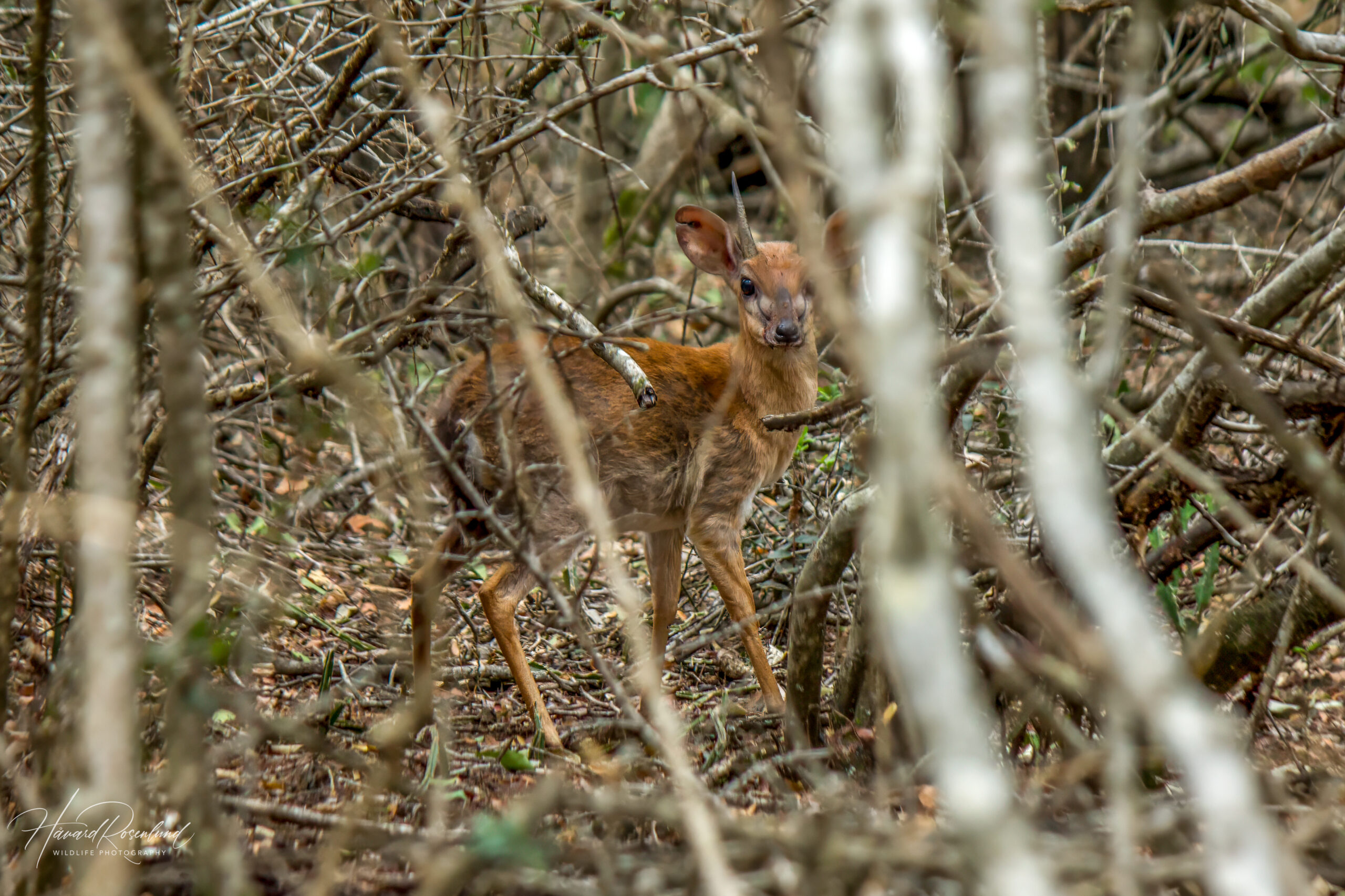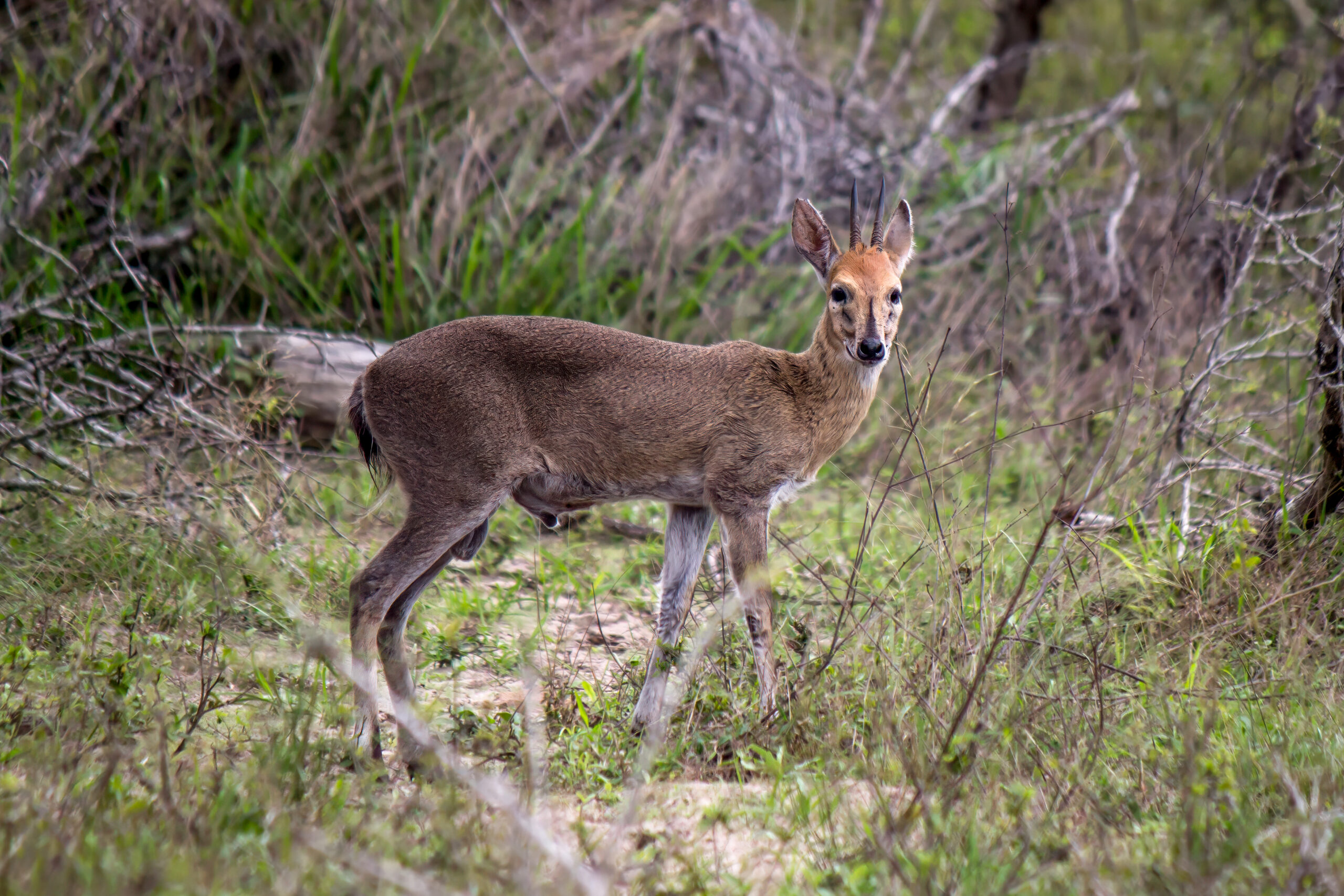Description
The suni (Nesotragus moschatus) is a very small species of antelope. They reach 30-43 cm (12-17 in) at the shoulder and weigh 4.5-5.4 kg (10-12 lb). Females are typically slightly larger than males. The coat is light brown to chestnut and will fade to a lighter color towards the flanks, underparts, and legs. Only males have horns, which are straight and can reach a length of 8-13 cm (3-5 in). It shares much of its range with the similarly sized Natal red duiker (Cephalophus natalensis), and the two could be confused with each other. Although both are small, the suni is much lighter in its build. The suni is also lighter in color.
Diet, habitat & behavior
The suni is a very shy and rare antelope that spends most of its life in dense forest understory and thickets. It feeds on fallen leaves, fungi, fruits, and flowers. They can live in drier areas as they do not need much water. Dry and dense sand forest habitats are perfect for suni. They are mostly active in the early morning, late evening and into the night. Most of the day is spent sleeping and resting in a sheltered and shady area. They blend in perfectly with the forest floor and are well camouflaged from predators. When danger approaches it will freeze until the threat is too close, at which time it will dart from its hiding place and vanish into the bush. If surprised the suni can give out a sharp bark as a warning call similar to that of larger antelope species.
Social behavior & reproduction
Male sunis hold territories of around three hectares. They will viciously fight rivaling males using their horns. Males mark their territory using dung, as well as scent marking using the preorbital glands situated on both sides of the face. One male usually forms a pair with one female, although several females can be within the territory of one male. Female sunis have a gestation period of about six months after which one fawn is born. The newborn will stay hidden in thick bush and the mother will periodically return to groom and suckle it.
Status
It is believed to be 365,000 sunis within its distribution range, and the population is thought to be stable. Large populations are found within protected reserves. The suni is listed as least concern on IUCN Red List.
In South Africa the suni is listed as endangered, as it is only found in a few places such as northern Kruger National Park and northern KwaZulu-Natal, where they are found in Tembe Elephant Park, Ndumo Game Reserve, and surrounding areas. In Tembe Elephant Park, the second priority of the park, after conserving the endangered sand forest ecosystem, is to conserve the suni.







